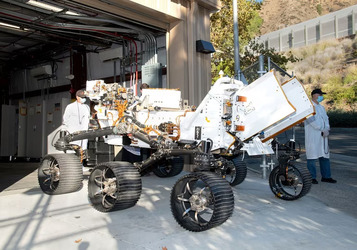The week's pick
Random Articles
Reseach Article
A Survey on Classification of ECG Signal Study
| Communications on Applied Electronics |
| Foundation of Computer Science (FCS), NY, USA |
| Volume 6 - Number 5 |
| Year of Publication: 2016 |
| Authors: Taha E. Taha, Ayman El-Sayed, Salma R. El-Soudy |
 10.5120/cae2016652467
10.5120/cae2016652467
|
Taha E. Taha, Ayman El-Sayed, Salma R. El-Soudy . A Survey on Classification of ECG Signal Study. Communications on Applied Electronics. 6, 5 ( Dec 2016), 11-16. DOI=10.5120/cae2016652467
Abstract
Electrocardiogram (ECG) is a non-linear dynamic signal which plays the main role in diagnosis heart diseases. Classification of ECG signal is one of the most important reason of diagnosing the heart diseases. Detecting accurate ECG signal not only the most difficult task but also classifying heart signal is very difficult task. There are many types of classifiers are available for ECG classification. The most popular classifier that used in ECG classification is Artificial Neural Network (ANN) and in second degree is Support Vector Machine (SVM). In this paper, we discuss a survey of preprocessing, ECG database, feature extraction and classifiers. This paper also discusses background of Electrocardiogram, evaluation matrices of classifiers and issues of classifiers.
References
- S. H. Jambukia, “Classification of ECG signals using machine learning techniques : A survey,” no. July, 2016.
- Y. N. Singh, S. K. Singh, and A. K. Ray, “Bioelectrical signals as emerging biometrics: Issues and challenges,” ISRN Signal Process., vol. 2012, 2012.
- A. Gacek and W. Pedrycz, ECG Signal Processing, Classification and Interpretation: A Comprehensive Framework of Computational Intelligence. Springer London, 2011.
- V. S. R. Kumari and P. R. Kumar, “CARDIAC ARRHYTHMIA PREDICTION USING IMPROVED MULTILAYER PERCEPTRON NEURAL NETWORK,” vol. 3, no. 4, pp. 73–80, 2013.
- “ECG waveform.” [Online]. Available: https://www.nhlbi.nih.gov/health/health-topics/topics/hhw/electrical. [Accessed: 01-Jul-2016].
- “ECG signal electrical system.” [Online]. Available: http://www.lifebeatonline.com/en-US/explore-heart-conditions/heart-smart.html. [Accessed: 01-Jun-2016].
- S. G. Hiremath, “WAVELET TRANSFORM BASED ON QRS DETECTION USING DIODIC ALGORITHM,” pp. 909–915, 2014.
- “ECG features and normal duration.” [Online]. Available: http://en.wikipedia.org/wiki/Electrocardiography. [Accessed: 01-Aug-2016].
- M. Sifuzzaman, M. R. Islam, and M. Z. Ali, “Application of Wavelet Transform and its Advantages Compared to Fourier Transform,” J. Phys. Sci., vol. 13, pp. 121–134, 2009.
- R. Raddadi and E. Abdelmounim, “Discrete Wavelet Transform Based Algorithm For Recognition Of QRS Complexes,” 2014.
- S. C. Saxena, V. Kumar, and S. T. Hamde, “Feature extraction from ECG signals using wavelet transforms for disease diagnostics,” Int. J. Syst. Sci., vol. 33, no. 13, pp. 1073–1085, 2002.
- R. J. Martis, U. R. Acharya, and L. C. Min, “ECG beat classification using PCA, LDA, ICA and Discrete Wavelet Transform,” Biomed. Signal Process. Control, 2013.
- H. Nagendra, S. Mukherjee, and V. Kumar, “Application of Wavelet Techniques in ECG Signal Processing : An Overview,” Int. J. Eng. Sci. Technol., vol. 3, no. 10, pp. 7432–7443, 2011.
- J. Pan and W. J. Tompkins, “A real-time QRS detection algorithm.,” IEEE Trans. Biomed. Eng., vol. 32, no. 3, pp. 230–236, 1985.
- S. L. Pingale, “Using Pan Tompkin ’ S Method , Ecg Signal Processing and Dignose Various Diseases in Matlab,” no. 411052, pp. 57–61, 2014.
- S. S. Mehta and N. S. Lingayat, “Detection of QRS complexes in electrocardiogram using support vector machine.,” J. Med. Eng. Technol., vol. 32, no. 3, pp. 206–215, 2008.
- G. C. Cawley and N. L. C. Talbot, “On over-fitting in model selection and subsequent selection bias in performance evaluation,” J. Mach. Learn. Res., vol. 11, no. Jul, pp. 2079–2107, 2010.
- X. Q., H. Y.H., and T. W.J., “Neural-Network-Based Adaptive Matched Filtering for QRS Detection,” IEEE Trans. Biomed. Eng., vol. 39, no. 4, pp. 317–329, 1992.
- M. Moavenian and H. Khorrami, “A qualitative comparison of artificial neural networks and support vector machines in ECG arrhythmias classification,” Expert Syst. Appl., vol. 37, no. 4, pp. 3088–3093, 2010.
- “UCI.” [Online]. Available: Available:https://archive.ics.uci.edu/ml/datasets/Arrhythmia. [Accessed: 18-Dec-2016].
- “MIT-BIH Database.” [Online]. Available: https://physionet.org/physiobank/database/mitdb/. [Accessed: 12-Jan-2015].
Index Terms
Keywords

